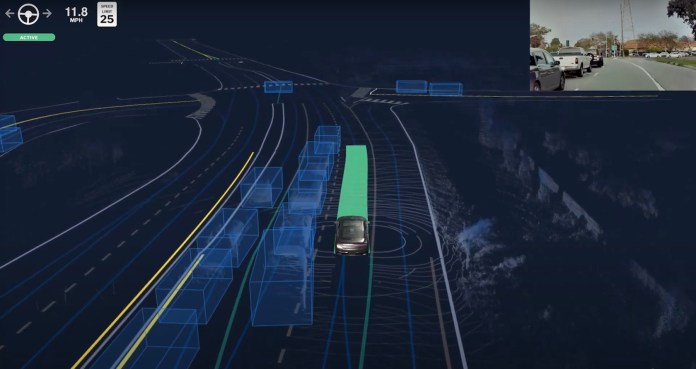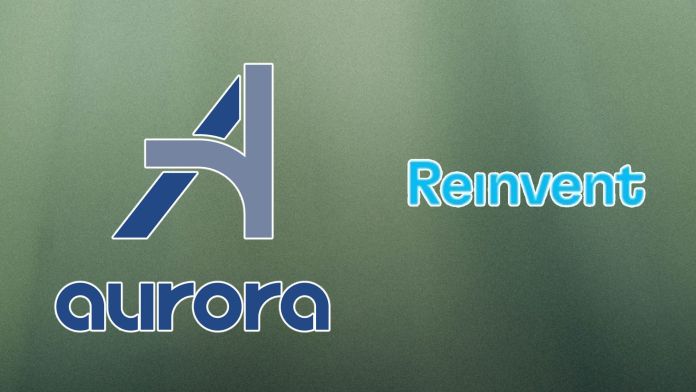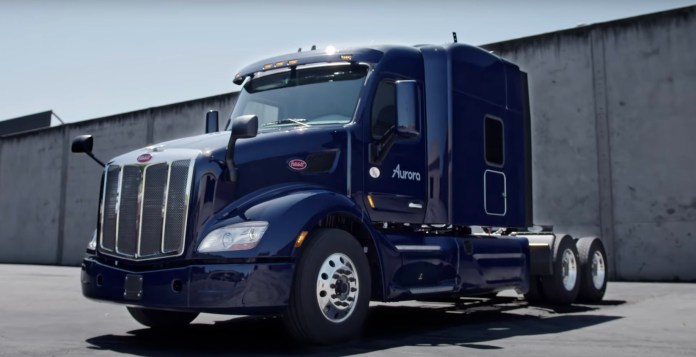The merger will give Aurora an infusion of cash to develop autonomous trucks and, later, self-driving passenger cars. Going public is not the norm for companies that don’t have a working and profitable business model. And what makes Aurora’s reverse IPO even more odd is that it comes at a time that the self-driving car industry is struggling with missed deadlines, shuttered projects, unsettled technical challenges, growing cash-burn rates, and loss of public trust. The race to pump cash in self-driving car startups can either indicate confidence in a technological breakthrough in the near term, or a desperate run to keep operations afloat until someone figures out how to overcome one of the greatest challenges of artificial intelligence.
What is Aurora up to?
Aurora was founded in 2017 by three veterans of the autonomous driving industry: Chris Urmson, the former CTO of Google’s self-driving project before it became Waymo; Sterling Anderson, former head of Tesla Autopilot; and Drew Bagnell, former head of Uber’s self-driving team. Aurora develops hardware and software for autonomous driving and calls its stack Aurora Driver. The company’s self-driving technology uses lidars, computer vision, and high-definition maps of roads. The company started out with autonomy for passenger cars and got involved in self-driving trucks since 2018. According to information released by the company, Aurora’s technology has so far accumulated 4.5 million miles of physical road test and 6 billion miles of simulated driving (in comparison, Waymo has driven more than 20 million miles on public roads, with nearly 7 million miles in Arizona alone). Aurora has integrated and tested its technology on cars and trucks of Volvo, PACCAR, and Toyota, all of which are partners and have invested in the company. Aurora is also in partnership with Uber (another of its investors), from whom it bought its self-driving unit, the Advanced Technology Group (ATG) in 2020. The acquisition gave Aurora access to Uber’s talent and experience and put Uber on Aurora’s board. According to the documents the company has published, it plans to launch commercial self-driving trucks in late 2023. The declared goal is level-4 self-driving, in which the AI takes care of most of the driving and human drivers only take control in complicated settings. Aurora also plans to follow up with self-driving passenger car technology in 2024 with last-mile delivery and ride-hailing services.
The SPAC
A SPAC is a shell company that goes to the stock market for the sole purpose of a reverse merger. It has no business or operations. Sometimes, it’s called a “blank check” company because investors are basically trusting its owners to make a good acquisition without knowing in advance which company it will be. Once the merger is made, the SPAC’s name is changed to that of the acquired company. For the company being acquired, a SPAC relieves the complexities of the IPO process, the roadshow, the pre-IPO scrutiny, etc. This is especially beneficial for companies such as Aurora, which are going public on the mere promise of delivering a product in the future and don’t have a working business model to present. Basically, SPACs give companies a fresh new round of funding from the stock market minus the usual frustration. The reverse merger with Reinvent will provide Aurora with more than $2 billion in cash to continue its extremely expensive and unprofitable operations for another few years. But SPACs aren’t without tradeoffs. As a publicly traded company, Aurora will be under public scrutiny, and it will have to be fully transparent and publish complete details of its operations and expenses, which can be unpleasant when you’re burning investor money without making any profit. Reinvent was launched by LinkedIn co-founder and investor Reid Hoffman, Zynga founder Mark Pincus, and investor Michael Thompson. Reinvent’s investors include other Aurora funders and partners, including Sequoia Capital, T. Rowe Price Associates, Index Ventures, Uber, Baillie Gifford, Index Ventures, Volvo, and PACCAR. Interestingly, Hoffman is also a partner at Greylock, a VC firm that, along with Index Ventures, invested $90 million in Aurora in 2018. The funding round put Hoffman on Aurora’s board. (According to Aurora’s press release, Hoffman “is not a member of the transaction committee, was not permitted to attend any sessions of the transaction committee, and has recused himself from discussions and decisions of Reinvent’s board about the proposed transaction. Mr. Hoffman also recused himself from discussions of Aurora’s board of directors and management about the proposed transaction and from voting on matters related to the proposed transaction.”)
The business plan
Aurora’s decision to start with the low-hanging fruit of self-driving trucks makes sense from a business perspective. Autonomous ride-hailing has so far proven to be a hard nut to crack. Both Uber and Lyft have sold their self-driving units and canceled short-term plans to launch their own robo-taxi services. And Waymo, which has access to Google’s virtually bottomless supply of money, has only launched its fully self-driving service (with remote backups) in limited jurisdictions and without making profits. Achieving L4 self-driving with trucks, however, is supposedly much easier (though there’s still no company with a fully operational and profitable product yet). Trucks spend most of their time on highways and freeways, where they don’t have to deal with pedestrians, unprotected turns, and other thorny situations. Waabi, another self-driving car startup that recently came out of stealth with $85 million in funding, has also set its sight on self-driving trucks in the short term. If Aurora manages to achieve its goal, the self-driving truck product will provide it with access to a huge market, in which Volvo and PACCAR have a sizeable share. It can then use the profits to fund its continued research and development of self-driving technology for urban areas. But for the moment, Aurora is losing money at an accelerating pace ($214 million in 2020 vs $94 million in 2019), and the financial support it receives from the SPAC merger will be crucial for the next few years. According to its documents, Aurora doesn’t expect to become profitable before 2027, three years after it delivers its self-driving truck product. And given the history of missed deadlines in the self-driving industry, it won’t be surprising to see some adjustments to Aurora’s timeline. (Aurora acknowledges this in its investor presentation deck: “It is possible that our technology will have more limited performance or may take us longer to complete than is currently projected. This could materially and adversely affect our addressable markets, commercial competitiveness, and business prospects.”) If the plan works out, Aurora’s investors will see huge returns on their investment. But there are a lot of ifs in Aurora’s roadmap, including four slides that detail 68 risk factors, several of which can spell disaster for the entire business model, making it seem like a very risky gamble. At this point, it’s hard to say whether the SPAC merger will turn out to be a huge business success or a last-ditch effort by Aurora’s initial and new investors to keep the company afloat, hoping that its roster of experienced and talented engineers will make things work before the investors run out of cash or patience (or both). This article was originally published by Ben Dickson on TechTalks, a publication that examines trends in technology, how they affect the way we live and do business, and the problems they solve. But we also discuss the evil side of technology, the darker implications of new tech, and what we need to look out for. You can read the original article here.


